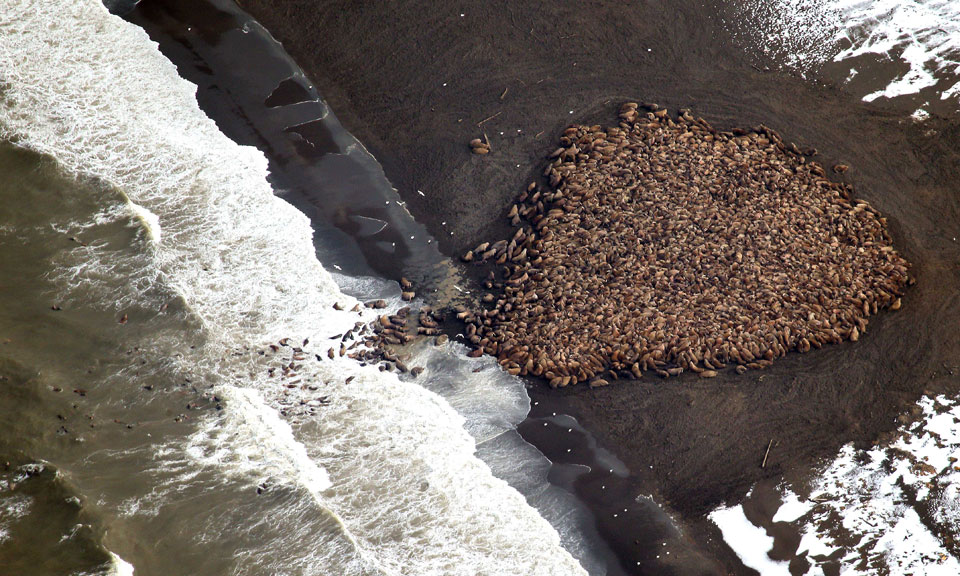35,000 Walruses Have Mobbed the Alaskan Coast—Because There’s No Sea Ice Left to Rest On
NOAA has photographed the animals gathering on the Alaskan shore.
It’s exhausting, being a walrus. Seals can swim indefinitely. Not walruses. After a day cruising Arctic water for food, they like to plant their tusks onto an ice floe, haul their blubbery selves up, and have a snooze. But it’s been hard to find a comfy chunk of sea ice this summer. So walruses are opting for the next best thing: Alaska .

Pacific walrus looking for places to rest in the absence of sea ice are coming to the shore in records numbers this year, NOAA found by shooting aerial photography of Alaska. - NOAA/AP
An estimated 35,000 have overrun the coast north of Point Lay, in northwest Alaska, according to the National Oceanic and Atmospheric Administration.
Walruses in the Bering Sea use ice floes as floating home bases between dives to the sea bottom, where they snack on clams and other mollusks. In the winter, that’s no problem. And until recently, it wasn’t an issue in summer, either. Normally, female walruses and their young follow the sea ice north into the relatively shallow Chukchi Sea, just north of the Bering Strait, where diving to the bottom is easy. But as summer temperatures rise, the Arctic sea ice has shrunk , receding further and further north, and pulling the ice mass into swaths of the Arctic Ocean as many as two miles deep.

Since walruses can’t hunt easily in those waters, they have to find a new home base for summer foraging, scientists suspect—and that’s why the animals are heading to Alaska. This isn’t the first time walruses have been found summering there; they’ve also shown up in large numbers in 2007, 2009, and 2011, when some 30,000 of them camped out on a 1-kilometer stretch of Point Lay.
As it happens, the chunk of sea ice that caps the Arctic was, this year, the sixth-smallest on record .
NEXT STORY: Secret Service Director Julia Pierson Resigns



